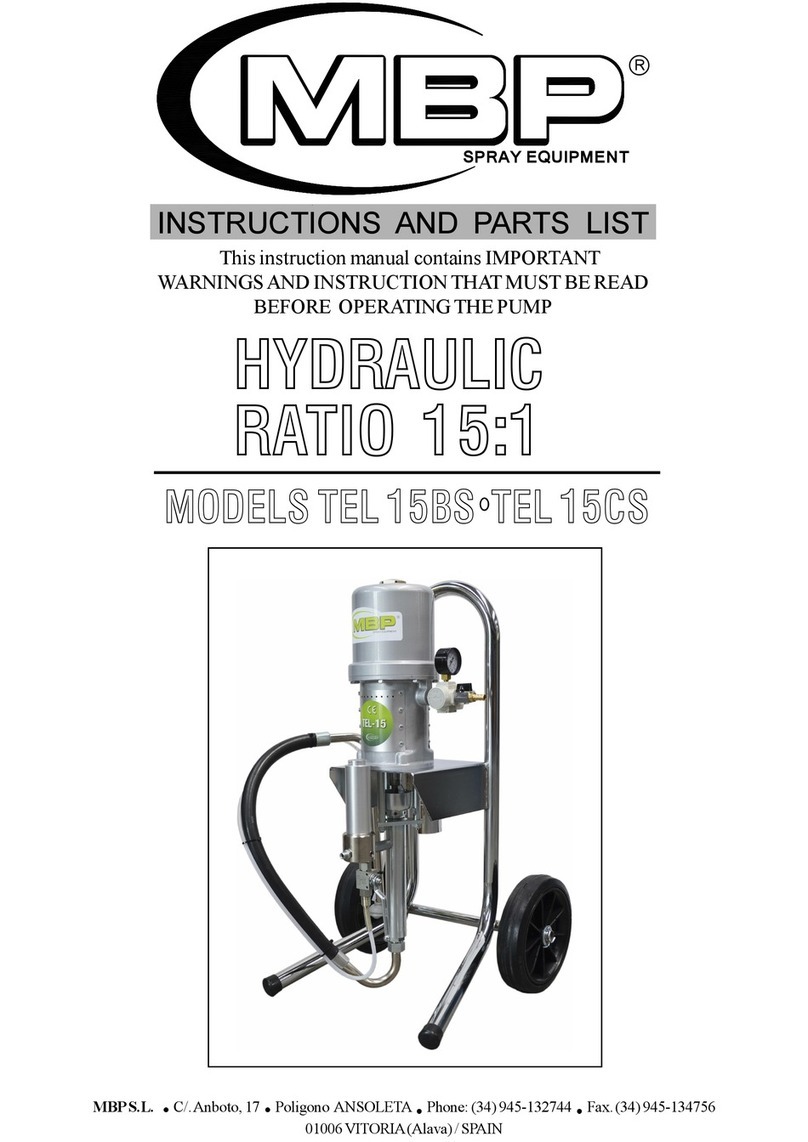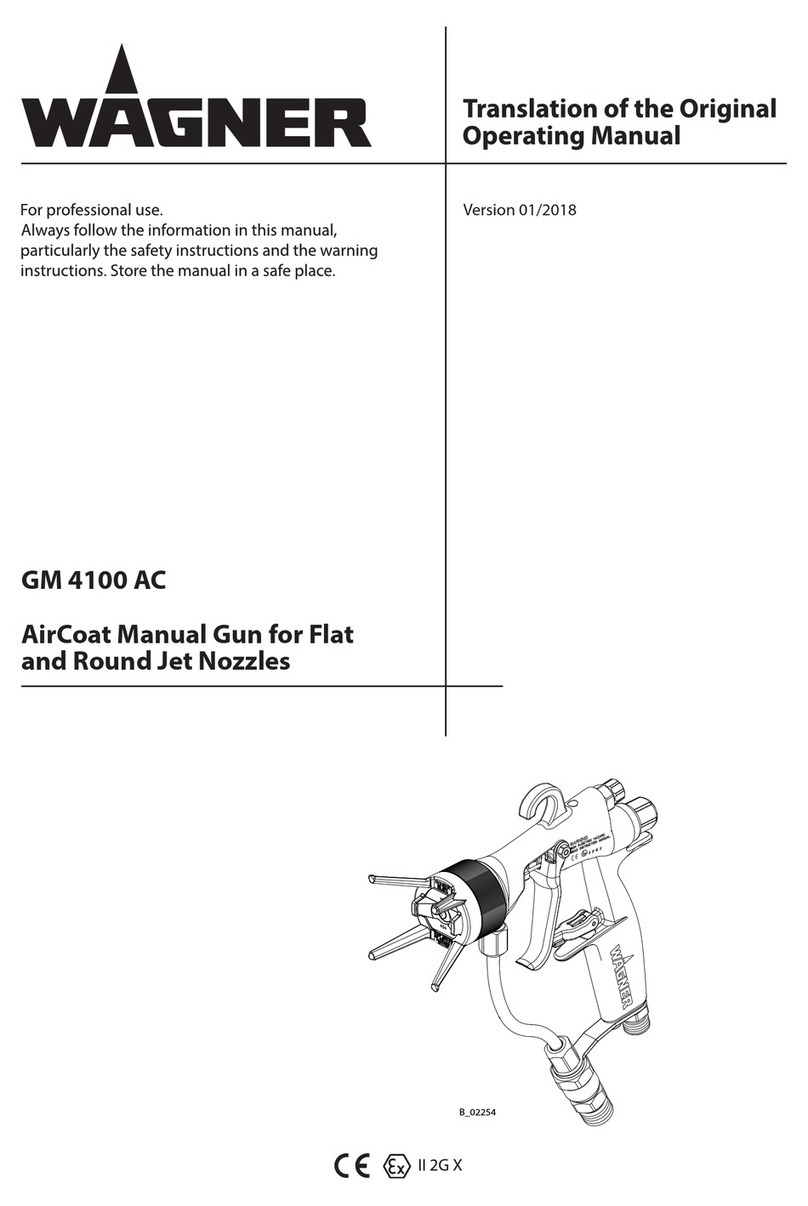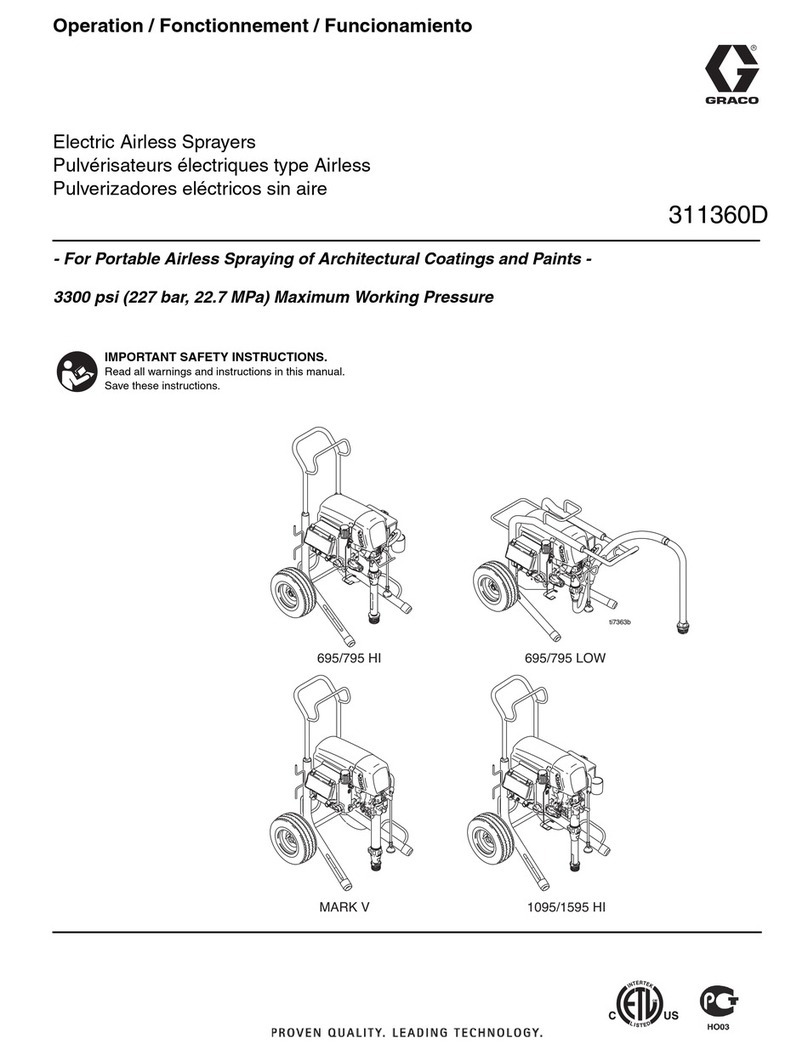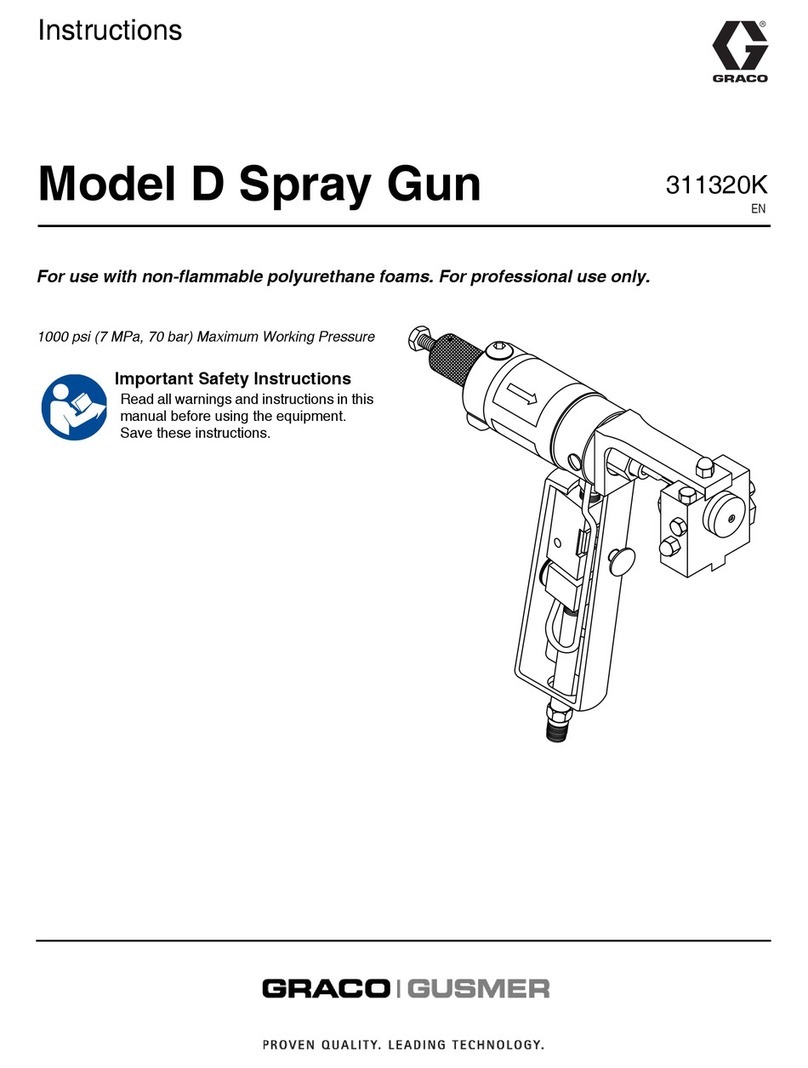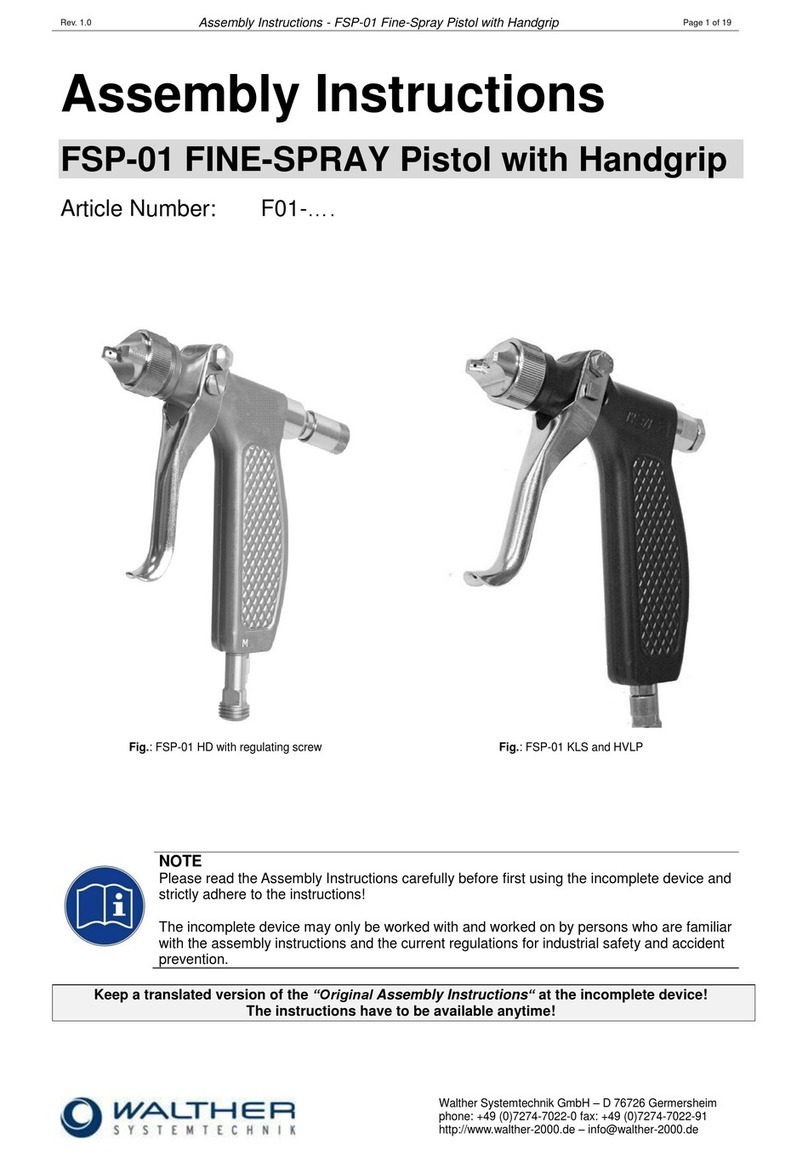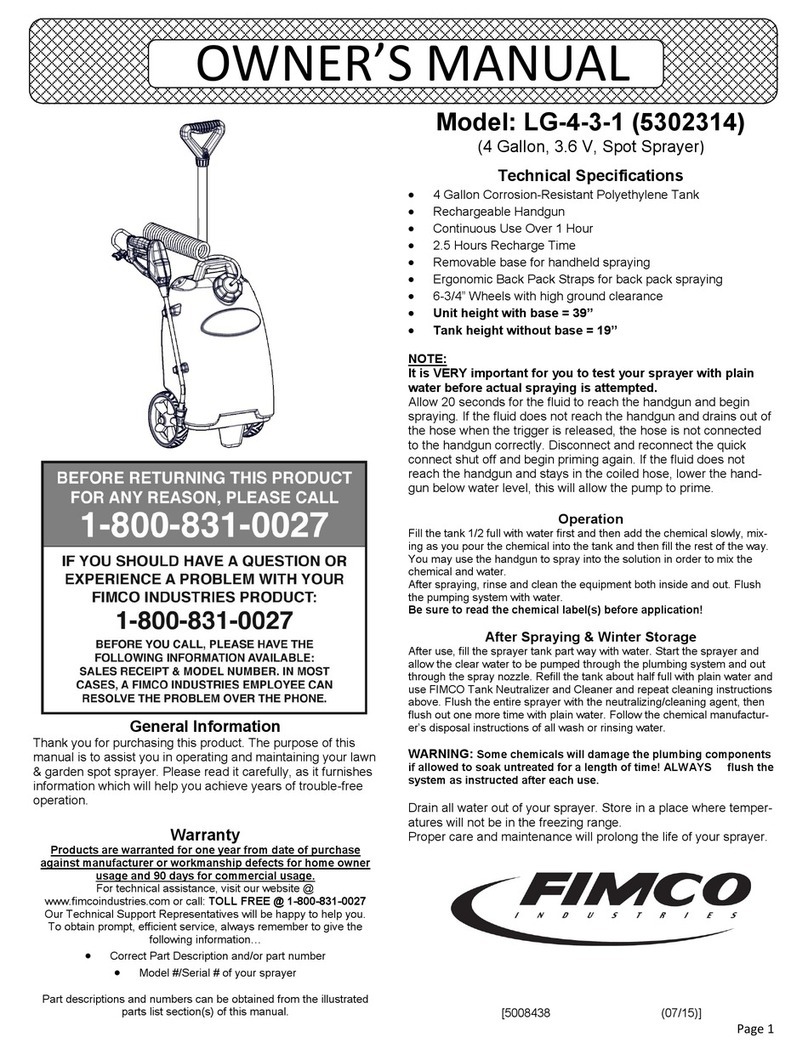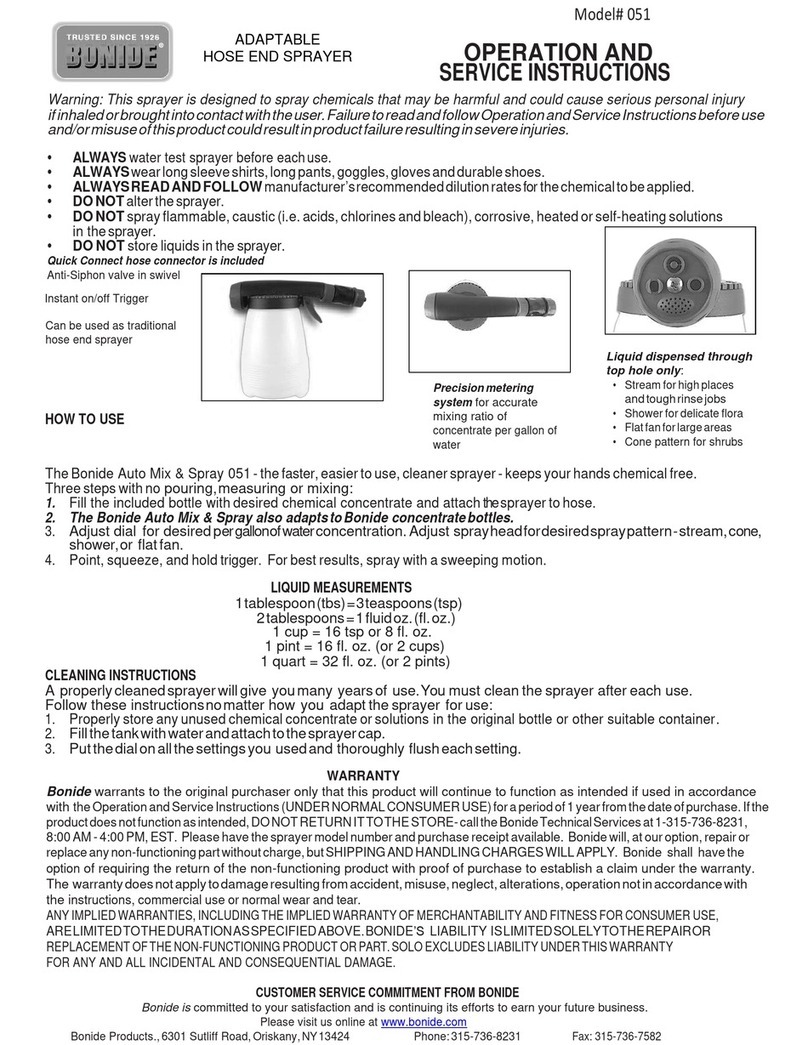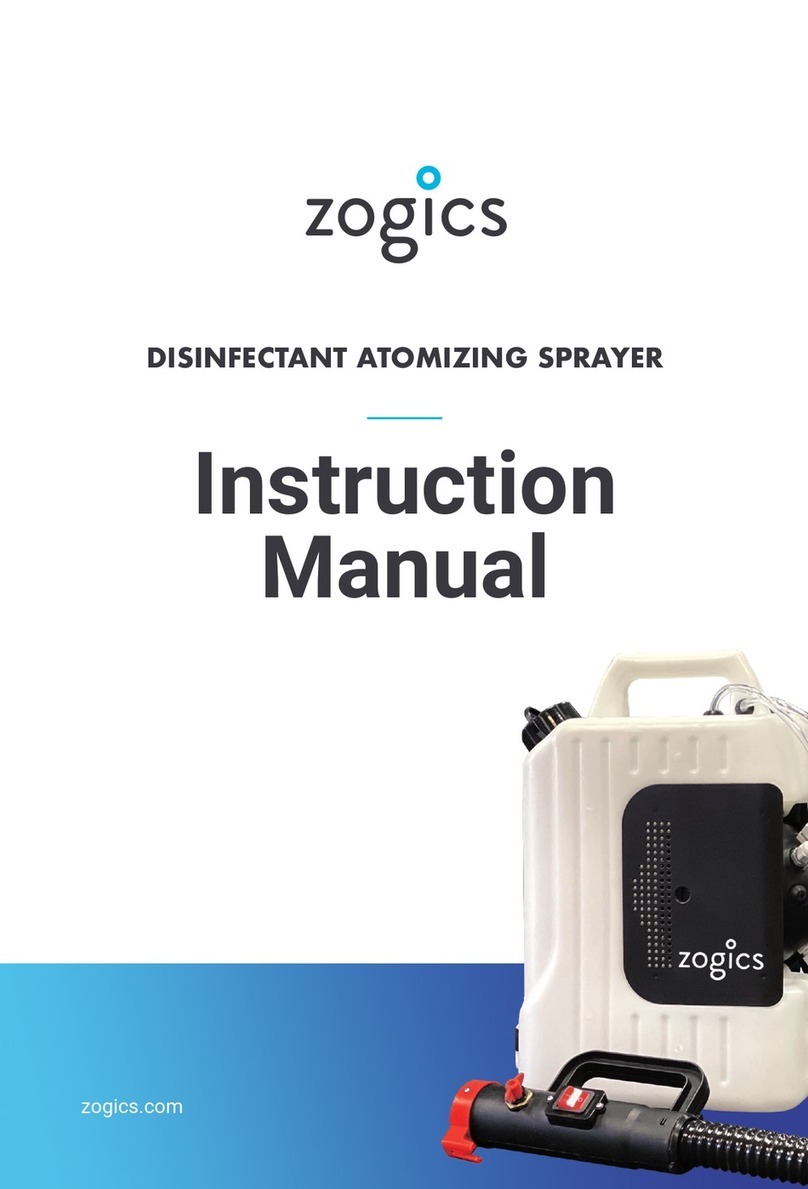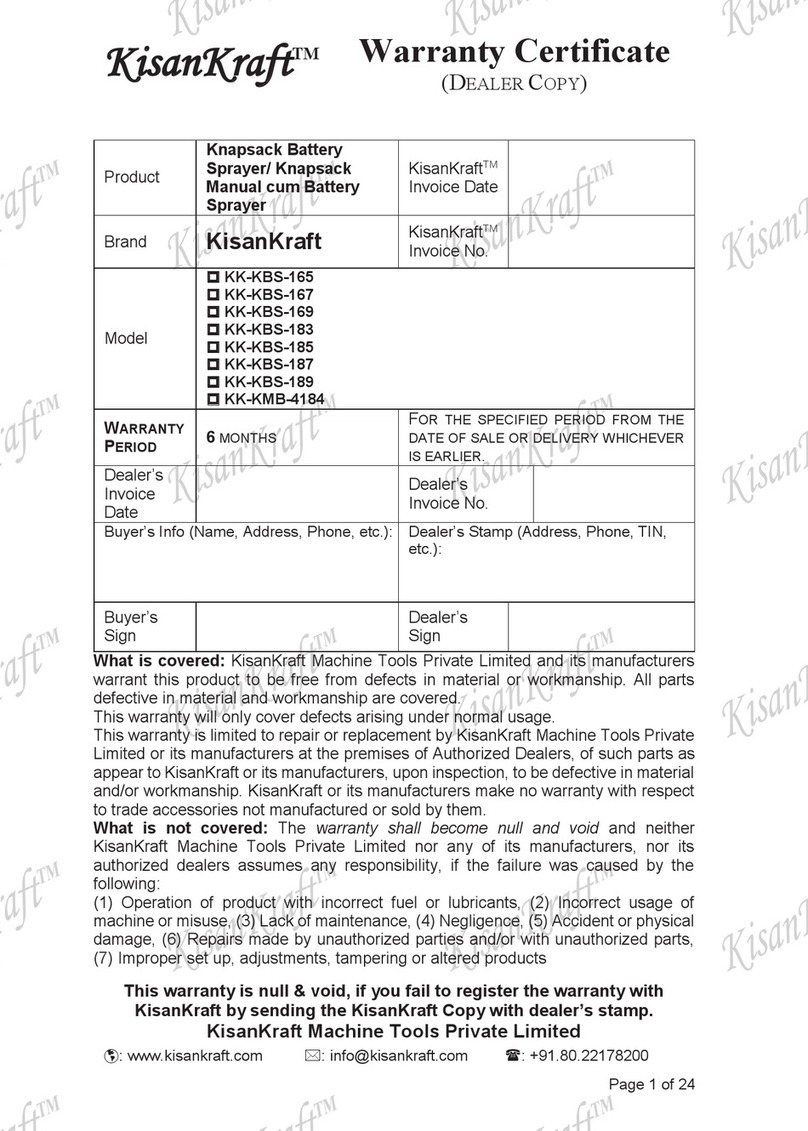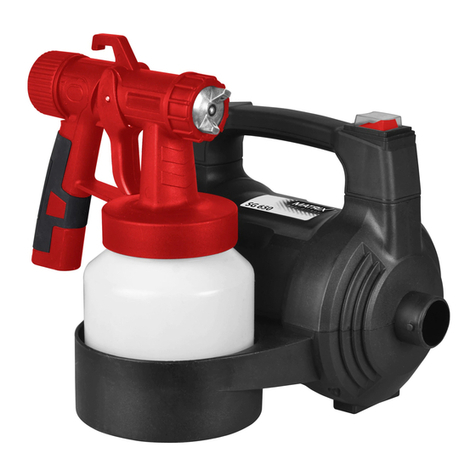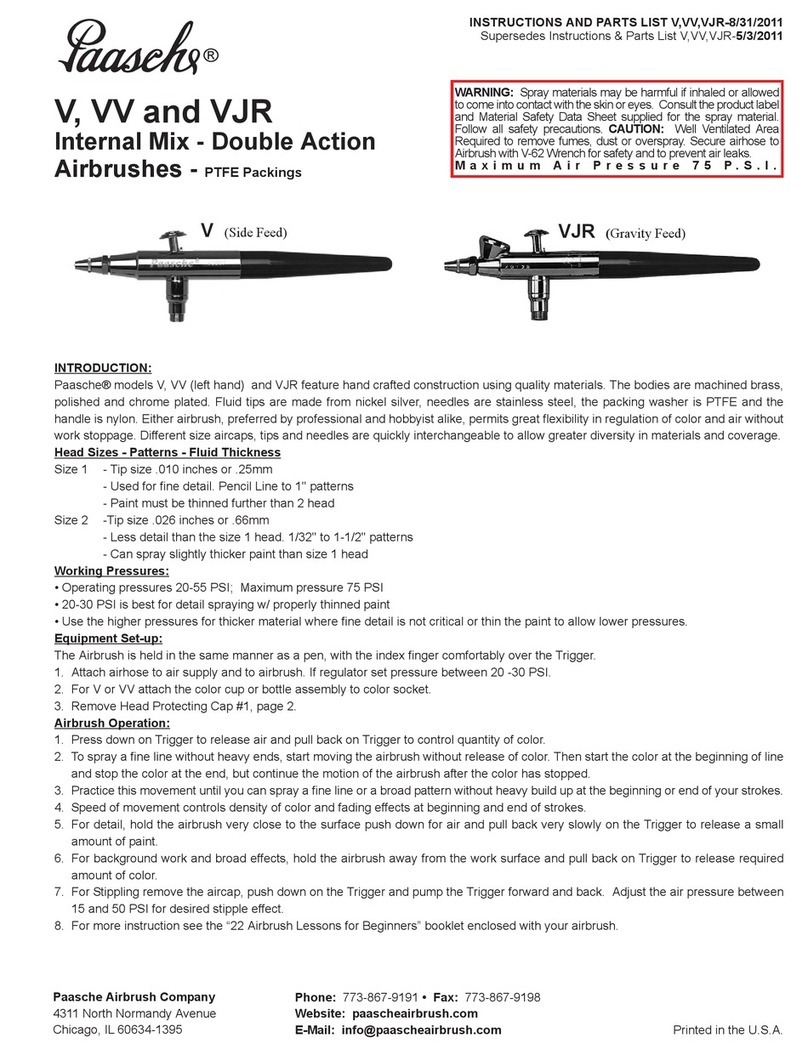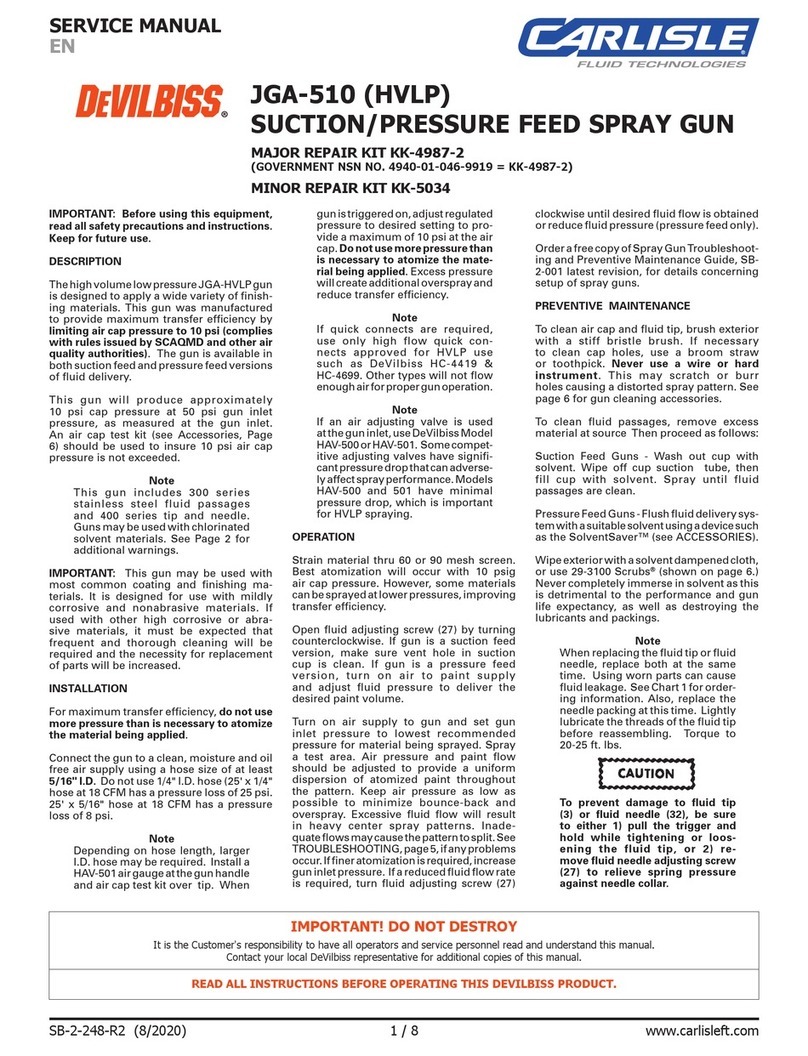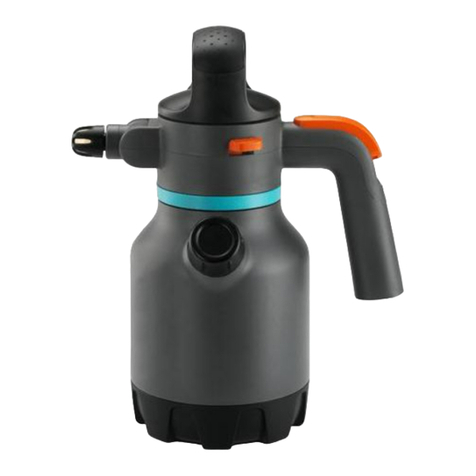
For technical questions, please call 1-800-444-3353;
Troubleshooting section at end of manual.
SKU 94572 Page 5
18. Maintenance. For your safety, maintenance should be performed regularly by a qualied
technician and the unit must be thoroughly cleaned out after every use. Improper
cleaning of the Spray Gun is a common reason for the Spray Gun to jam or not
perform properly.
19. Compressed air only. Never use combustible gas as a power source. Never exceed
the recommended operating pressure of the any of the parts (i.e. hoses, ttings, gun)
of the Sprayer system.
20. Do not spray near open ames, pilot lights, stoves, heaters, the air compressor, or
any other heat source. Most solvents and coatings are highly ammable, particularly
when sprayed. Maintain a distance of at least 25 feet from the air compressor. If
possible, locate the air compressor in a separate room. Do not smoke while spraying.
21. Read all of the information concerning coating products and cleaning solvents.
Chlorinated solvents (e.g. 1-1-1 Trichlorethylene and Methylene Chloride, also known
as methyl chloride) can chemically react with aluminum and may explode. Many paint
sprayers contain aluminum. If you have any doubt about potential chemical reactions,
contact the solvent or coating manufacturer.
22. Materials used when painting or cleaning may be harmful or fatal if inhaled or
swallowed. Only use in an area with adequate ventilation. Use a respirator or mask
when painting or using cleaning solvents.
23. Never release the sprayer lid while the cup is pressurized.
24. Industrial applications must follow OSHA requirements.
25. Never point a spray gun at a person or animal. Serious injury could occur.
26. Spraying hazardous materials may result in serious injury or death. Do not spray
pesticides, acids, corrosive materials, fertilizers, and toxic chemicals.
27. WARNING: The brass components of this product contain lead, a chemical known to
the State of California to cause birth defects (or other reproductive harm).
(California Health & Safety Code § 25249.5, et seq.)
28. Do not exceed the maximum of 35 PSI for these spray guns.
Note: Performance of the compressor (if powered by line voltage) may vary depending on
variations in local line voltage. Extension cord usage may also affect tool performance.
WARNING: The warnings, cautions, and instructions discussed in this instruction
manual cannot cover all possible conditions and situations that may occur. It must be
understood by the operator that common sense and caution are factors which cannot
be built into this product, but must be supplied by the operator.
WARNING: The brass components of this product contain lead, a chemical known to
the State of California to cause birth defects (or other reproductive harm). (California
Health & Safety code 25249.5, et seq.)






